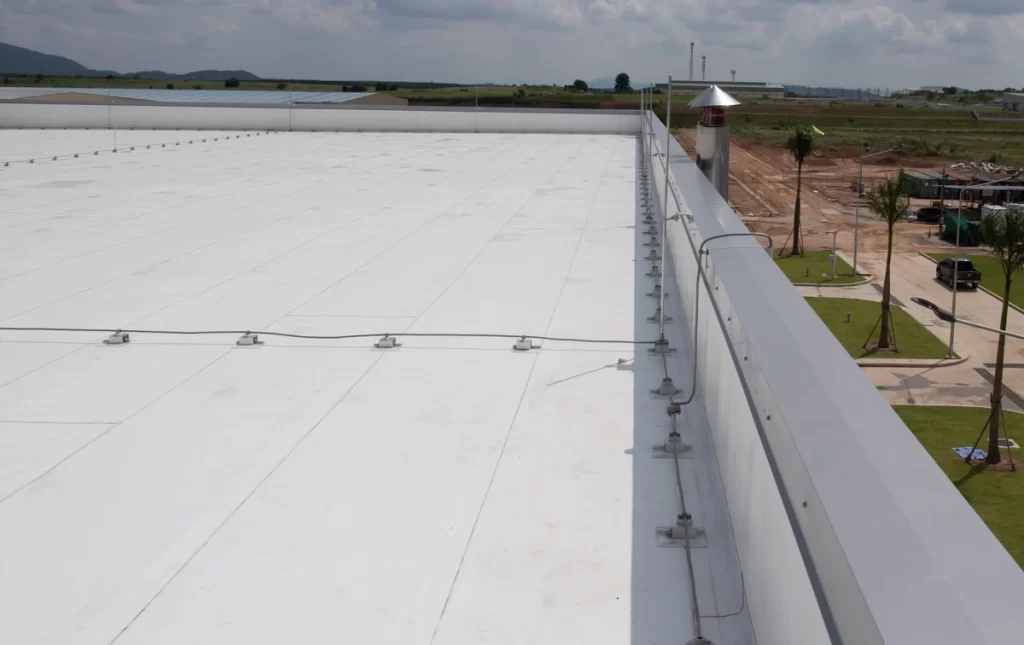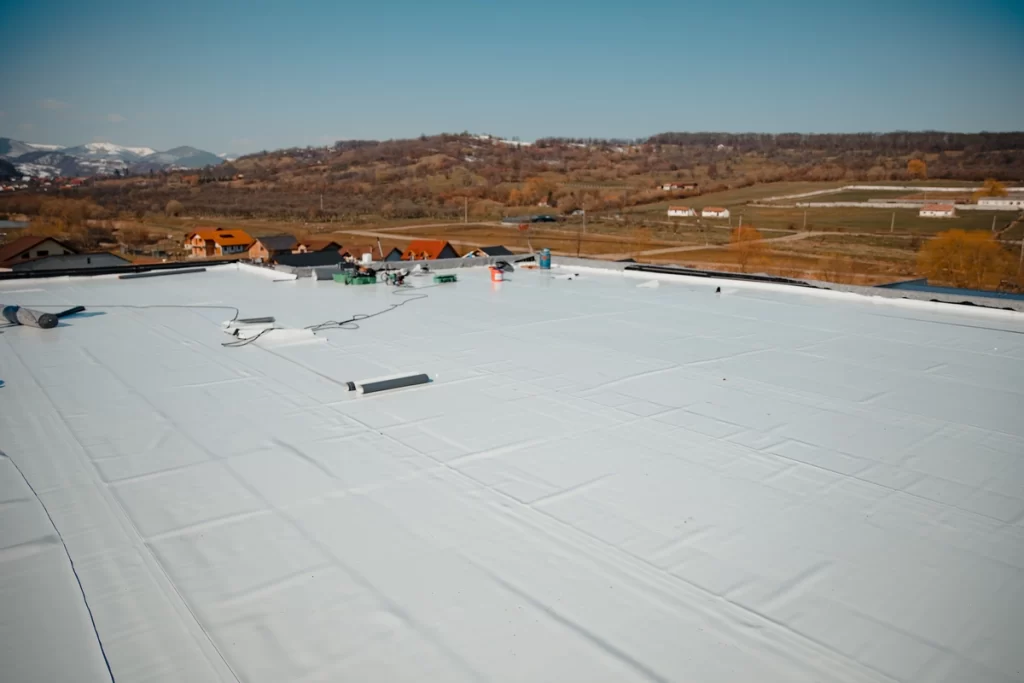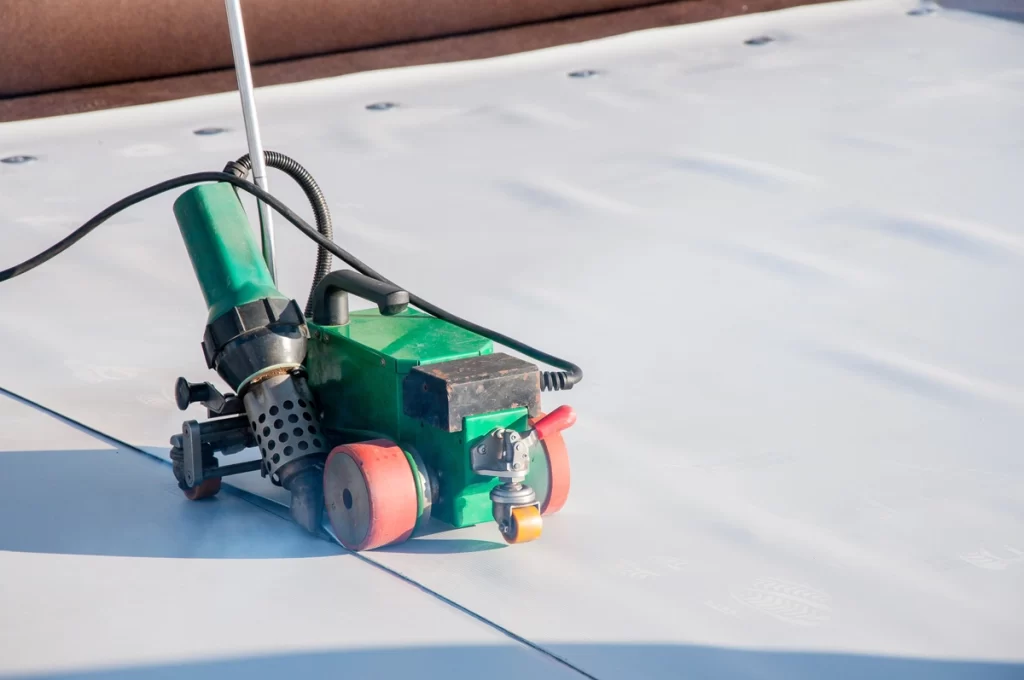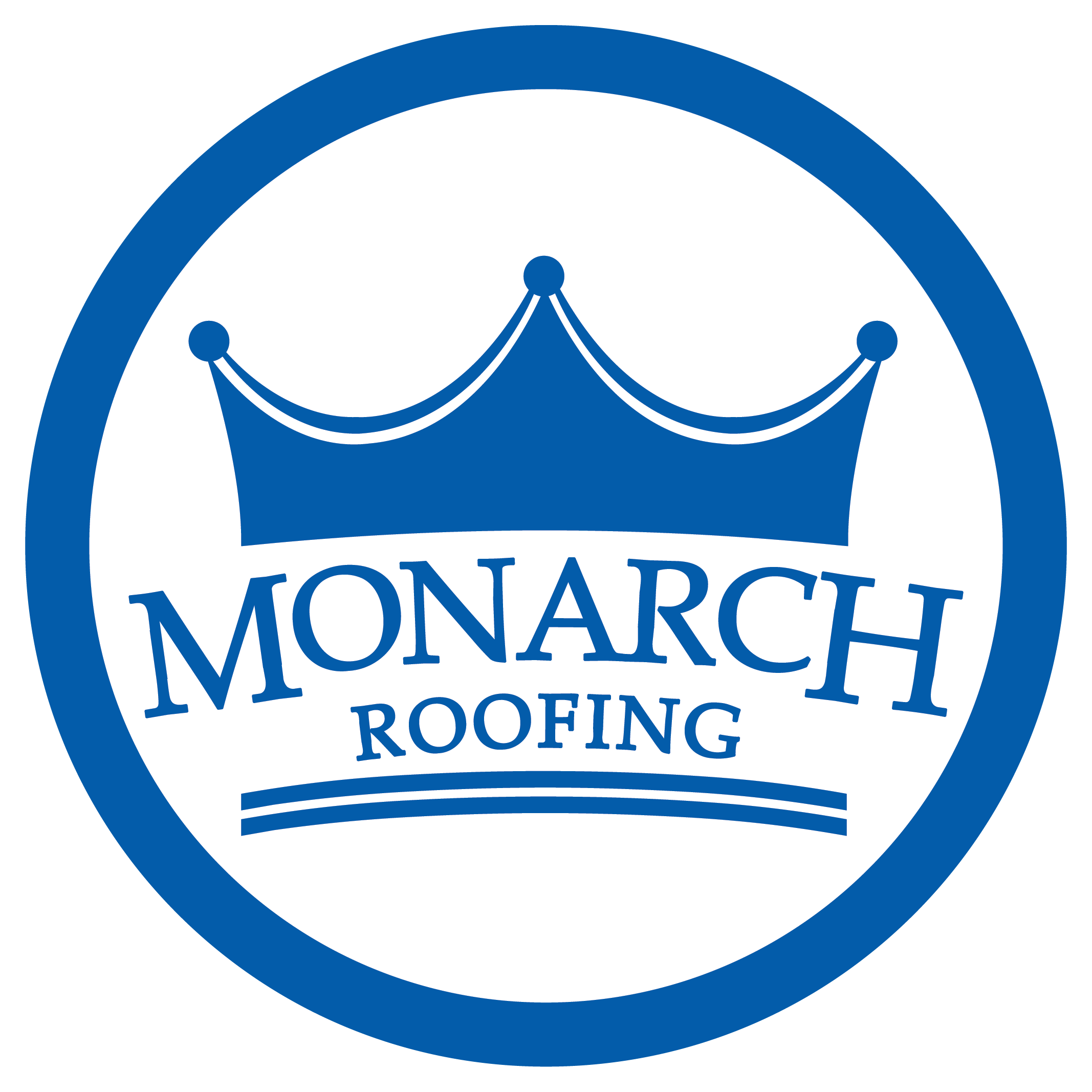If you’re a property owner, maintaining the roof over your head is one of your primary responsibilities. A well-maintained roof not only ensures the safety and comfort of those within but also enhances the overall value of the property. One roofing material that’s gaining popularity among property owners for its durability, energy efficiency, and ease of installation is the PVC roofing membrane.
Today’s expert blog post is all about exploring everything you need to know aboutPVC roofing membranes, including:
- Their benefits
- Installation process
- Maintenance tips
- How they compare to other roofing materials
Whether you’re considering a new roof or replacing an old one, this guide will help you make an informed decision.
What is a PVC Roofing Membrane?

PVC (polyvinyl chloride) roofing membrane is a type of single-ply roofing material made from durable, flexible plastic. It is primarily used on flat or low-slope roofs and is known for its excellent weather resistance, longevity, and energy efficiency. PVC roofing membranes consist of two layers of PVC material with a reinforcement layer in between, usually made of polyester or fiberglass.
⭐️ 6 Benefits of PVC Roofing Membranes ⭐️
A PVC roofing membrane comes with a whole host of benefits for you and your roofing system.
1) Durability and Longevity:
One of the most significant advantages of PVC roofing membranes is their durability. These membranes can withstand extreme weather conditions, including high winds, heavy rain, and intense UV rays. PVC’s resistance to chemicals, punctures, and fire further enhances its longevity, often lasting 20-30 years with proper maintenance.
2) Energy Efficiency:
PVC roofing membranes are highly reflective, meaning they can reflect a significant portion of the sun’s rays. This reflectivity helps reduce the amount of heat absorbed by the building, lowering cooling costs during hot months. Many PVC membranes meet or exceed ENERGY STAR requirements for energy efficiency, making them an eco-friendly choice.
3) Low Maintenance:
Unlike other roofing materials that may require frequent repairs and upkeep, PVC roofing membranes are relatively low maintenance. Their resistance to mold, mildew, and algae means less cleaning and fewer issues over time. Regular inspections and minor maintenance can keep a PVC roof in excellent condition for decades.
4) Ease of Installation:
PVC roofing membranes are lightweight and flexible, making them easier to install compared to traditional roofing materials like asphalt shingles or metal panels. The installation process is less labor-intensive, which can reduce overall costs and minimize disruption to the property.
5) Versatility:
PVC roofing membranes can be customized to fit various roof shapes and sizes. They are available in different colors, thicknesses, and textures, allowing property owners to choose the best option for their specific needs and aesthetic preferences.
6) Environmental Benefits:
PVC roofing membranes are recyclable, which means they can be repurposed at the end of their life cycle. Additionally, their energy-efficient properties contribute to lower carbon footprints for the buildings they cover.
How PVC Roofing Membranes Compare to Other Roofing Materials

Struggling to choose between a PVC roofing system or another flat roofing material? Here are some comparisons to keep in mind.
PVC vs. TPO (Thermoplastic Olefin)
TPO and PVC are both single-ply roofing membranes, but there are some key differences:
- Durability: PVC is generally more durable and resistant to chemicals compared to TPO.
- Energy Efficiency: Both materials are energy-efficient, but PVC’s higher reflectivity gives it an edge in reducing cooling costs.
- Cost: TPO is usually less expensive than PVC, but the latter’s longer lifespan can offset the initial cost difference over time.
PVC vs. EPDM (Ethylene Propylene Diene Monomer)
EPDM is another popular single-ply roofing material that offers different benefits:
- Durability: PVC membranes are more resistant to punctures and chemicals than EPDM.
- Energy Efficiency: EPDM is typically black and absorbs more heat, while PVC’s reflective properties make it more energy-efficient.
- Cost: EPDM is usually cheaper upfront, but like TPO, it may not offer the same long-term value as PVC.
PVC vs. Asphalt Shingles
Asphalt shingles are a common choice for residential roofs, but how do they stack up against PVC?
- Durability: PVC membranes last longer and require less maintenance than asphalt shingles.
- Energy Efficiency: Asphalt shingles are not as energy-efficient as PVC membranes, leading to higher cooling costs.
- Installation: PVC membranes are easier and quicker to install than asphalt shingles, which can reduce labor costs.
- Aesthetics: Asphalt shingles offer a traditional look, while PVC membranes provide a modern, sleek appearance.
Installation Process of PVC Roofing Membranes: 5 Steps
Wondering what the installation process of your PVC roof will be like? Here are the steps to prepare for.
1. Roof Inspection and Preparation
Before installing a PVC roofing membrane, it’s essential to inspect the existing roof structure for any damage or issues that need to be addressed. The roof surface must be clean, dry, and free of debris. Any necessary repairs should be made to ensure a smooth installation process.
2. Measuring and Cutting the Membrane
Accurate measurements are crucial for a successful installation. The PVC membrane should be cut to fit the specific dimensions of the roof, allowing for any necessary overlaps and seams.
3. Installing the Membrane
There are several methods for installing PVC roofing membranes, including:
- Mechanically Attached: The membrane is secured to the roof deck using fasteners and plates. This method is suitable for areas with high wind uplift concerns.
- Fully Adhered: The membrane is bonded to the substrate using adhesive. This method provides a smooth, uniform appearance and is ideal for roofs with complex shapes.
- Ballasted: The membrane is loosely laid over the roof and held down with ballast, such as gravel or pavers. This method is quick and cost-effective but may not be suitable for all roof types.
4. Sealing the Seams
Properly sealing the seams is crucial to ensure the roof is watertight. PVC membranes are typically heat-welded, creating a strong, durable bond that prevents leaks. It’s essential to follow the manufacturer’s guidelines for seam sealing to achieve the best results.
5. Inspecting the Finished Roof
Once the installation is complete, a thorough inspection should be conducted to ensure the membrane is properly secured, and all seams are sealed. Any issues should be addressed promptly to maintain the roof’s integrity.
Maintenance Tips for PVC Roofing Membranes
Keep your new roof in tip-top shape with these simple maintenance tips.
Regular Inspections
Conducting regular roof inspections can help identify potential issues before they become significant problems. Look for signs of wear and tear, such as punctures, loose seams, or debris buildup.
Cleaning the Roof
Keeping the roof clean is essential for maintaining its reflective properties and preventing mold or algae growth. Use a mild detergent and soft brush to clean the surface, avoiding harsh chemicals or abrasive tools that could damage the membrane.
Addressing Repairs Promptly
If you notice any damage or issues during your inspections, address them promptly to prevent further deterioration. Small punctures or tears can often be repaired using PVC patch kits, while more extensive damage may require professional assistance.
Monitoring Roof Accessories
Check roof accessories, such as drains, vents, and flashing, for signs of wear or damage. Ensure they are properly sealed and functioning correctly to prevent water infiltration.
Professional Maintenance
Consider scheduling regular professional maintenance to ensure your PVC roof remains in optimal condition. Roofing professionals can provide thorough inspections, cleaning, and repairs to extend the life of your roof.
Commercial Roofing Expertise

PVC roofing membranes offer property owners a durable, energy-efficient, and low-maintenance roofing solution. With proper installation and regular maintenance, a PVC roof can provide decades of reliable performance, protecting your property and reducing energy costs.
If you’re considering a new roof or looking to replace an existing one, PVC roofing membranes are worth exploring. Their numerous benefits, combined with their versatility and longevity, make them an excellent investment for any property owner.
Ready to take the next step? Contact Monarch Roofing to discuss your options and determine if a PVC roofing membrane is the right choice for your property. Your new, long-lasting, and energy-efficient roof awaits!





